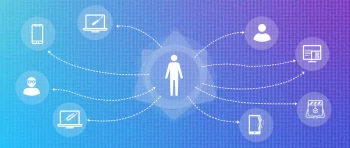In today's hyper-connected marketplace, customers expect consistent, personalized experiences across all touchpoints with a brand. An omnichannel service strategy isn't just a competitive advantage anymore—it's a necessity for businesses aiming to thrive in the digital age. This comprehensive guide explores the essential best practices for implementing a truly seamless omnichannel service strategy that enhances customer satisfaction, builds loyalty, and drives business growth.
Understanding Omnichannel Service: Beyond Multichannel
Before diving into implementation strategies, it's crucial to understand what true omnichannel service entails. While multichannel approaches simply offer service across various platforms, omnichannel service integration creates a unified experience where channels complement each other and work together seamlessly.
The key difference lies in connectivity—omnichannel strategies ensure that customer data, interaction histories, and preferences flow smoothly between channels, creating a cohesive customer journey rather than fragmented interactions. According to research by Aberdeen Group, companies with strong omnichannel customer engagement retain approximately 89% of their customers, compared to 33% for companies with weak omnichannel strategies.
Key Elements of a Successful Omnichannel Service Strategy
1. Comprehensive Customer Data Integration
The foundation of effective omnichannel customer experience is a unified view of customer information. This requires:
- Implementing a robust Customer Relationship Management (CRM) system that centralizes all customer data
- Creating unique customer identifiers that track interactions across all touchpoints
- Leveraging customer data platforms (CDPs) to create comprehensive customer profiles
- Establishing real-time data synchronization between channels and departments
When a customer can begin a conversation with a chatbot, continue it via email, and complete it over the phone without repeating information, you've achieved the seamless data integration that defines true omnichannel service.
2. Consistent Brand Voice and Experience
Whether customers engage with your brand via social media, in-store, through your mobile app, or on your website, the experience should feel cohesive and recognizable. This consistency requires:
- Developing clear brand guidelines for communication across all channels
- Training all customer-facing staff on these guidelines regardless of their channel specialty
- Ensuring visual elements, messaging tones, and service standards remain consistent
- Creating channel-specific strategies that still align with your overall brand identity
Omnichannel service design focuses on maintaining consistent quality while adapting to the unique advantages and limitations of each platform.
3. Channel-Appropriate Service Optimization
While consistency is vital, each channel has unique characteristics that should be optimized:
- Website: Intuitive navigation, comprehensive self-service options, and easy access to live support
- Mobile apps: Streamlined functionality, push notifications, and mobile-specific features
- Social media: Quick response times, personality-infused interactions, and social-specific support protocols
- Physical locations: Technology integration that connects in-person experiences to digital profiles
- Phone support: Access to complete customer history and seamless transfers between departments
Successful omnichannel customer service management balances consistency with channel optimization to deliver the best possible experience regardless of how customers choose to connect.
4. Intelligent Channel Transitions
Customers frequently start interactions on one channel and continue on another. Facilitating these transitions is critical:
- Implementing unique reference numbers that help identify ongoing issues across channels
- Enabling agents to see complete interaction histories regardless of channel origin
- Creating protocols for warm handoffs between channels
- Designing technology that allows customers to seamlessly move between self-service and assisted service
The hallmark of cross-channel service integration is that transitions feel natural and require minimal effort from customers.
Implementation Roadmap for Omnichannel Service Excellence
Phase 1: Assessment and Planning
Before implementing an omnichannel strategy, conduct a thorough assessment of your current service landscape:
- Channel audit: Evaluate all existing service channels, their performance metrics, and customer utilization patterns
- Customer journey mapping: Document the various paths customers take when engaging with your brand across multiple touchpoints
- Technology assessment: Identify gaps in your current tech stack that might hinder omnichannel integration
- Organizational readiness: Evaluate whether your team structure supports cross-channel collaboration
This foundation will inform your omnichannel service implementation plan and help identify priority areas for improvement.
Phase 2: Technology Infrastructure Development
Building the right technological foundation is essential for omnichannel success:
- Select an integrated CRM platform that can serve as your central customer data repository
- Implement API-driven architecture to connect disparate systems and enable data sharing
- Adopt omnichannel communication tools that consolidate interactions across channels
- Invest in analytics capabilities that provide insights across the entire customer journey
The right omnichannel service technology creates the infrastructure necessary for seamless experiences while providing valuable business intelligence.
Phase 3: Organizational Alignment
Omnichannel service requires breaking down traditional departmental silos:
- Restructure teams to focus on customer journeys rather than specific channels
- Develop cross-training programs so staff understand the complete service ecosystem
- Revise compensation structures to reward collaborative service rather than channel-specific metrics
- Create communication protocols that ensure information flows freely between departments
Successful omnichannel service management depends as much on organizational structure and culture as it does on technology.
Phase 4: Implementation and Optimization
With your foundation in place, focus on execution and continuous improvement:
- Start with high-priority touchpoints based on customer preferences and business impact
- Implement comprehensive testing before full deployment to identify potential friction points
- Gather feedback continuously from both customers and employees
- Establish KPIs that measure cross-channel performance rather than siloed metrics
- Create an optimization roadmap with regular review periods
The most effective omnichannel service strategies evolve continuously based on performance data and changing customer expectations.
Measuring Omnichannel Service Success
To evaluate the effectiveness of your omnichannel strategy, focus on these key metrics:
Customer-Focused Metrics
- Customer Effort Score (CES): Measures how easy it is for customers to get issues resolved across channels
- Net Promoter Score (NPS): Indicates overall customer loyalty and willingness to recommend your brand
- Customer Satisfaction (CSAT) across different channels and during channel transitions
- First Contact Resolution Rate: Tracks issues resolved without channel switching or follow-ups
Operational Metrics
- Channel switching frequency: Lower numbers typically indicate more effective channel experiences
- Average resolution time across the entire customer journey
- Authentication efficiency: How quickly and easily customers are recognized across channels
- Cross-channel data consistency: Measures accuracy of customer information between platforms
Business Impact Metrics
- Customer retention rates compared to pre-omnichannel implementation
- Customer lifetime value changes after omnichannel adoption
- Cross-sell and upsell success rates enabled by comprehensive customer insights
- Cost-to-serve reductions through more efficient service delivery
Comprehensive omnichannel service analytics provide visibility into both immediate performance and long-term strategic impact.
Common Challenges and Solutions
Challenge 1: Legacy System Integration
Many organizations struggle to connect older systems with newer channels and technologies.
Solution: Implement middleware solutions and APIs that can bridge legacy systems with modern applications without complete system replacement. Prioritize creating a unified data layer that can extract and normalize information from various sources.
Challenge 2: Organizational Resistance
Departments accustomed to channel-specific operations may resist the collaborative nature of omnichannel service.
Solution: Focus on change management practices that emphasize the benefits of integrated service. Create cross-functional teams and pilot projects that demonstrate success, then scale gradually while celebrating wins.
Challenge 3: Data Privacy and Security
Sharing customer data across channels creates potential security vulnerabilities and compliance challenges.
Solution: Implement robust data governance policies, ensure compliance with regulations like GDPR and CCPA, and build security into the design of your omnichannel architecture rather than adding it as an afterthought.
Challenge 4: Maintaining Consistency at Scale
As organizations grow, maintaining consistent experiences becomes increasingly difficult.
Solution: Develop detailed service blueprints, invest in comprehensive training programs, and leverage automation and AI to enforce standards and provide guidance to service teams across channels.
Future Trends in Omnichannel Service Strategy
As you refine your omnichannel approach, keep these emerging trends in mind:
AI-Powered Personalization
Artificial intelligence will increasingly drive hyper-personalized experiences by predicting customer needs and preferences across channels. This predictive omnichannel service will proactively address issues before customers even articulate them.
Voice and Conversational Interfaces
As voice assistants and smart speakers become more prevalent, integrating these interfaces into your omnichannel strategy will be essential. Voice-first design principles will influence how service interactions are structured across all channels.
Augmented and Virtual Reality
AR and VR technologies will create entirely new service channels that blend digital and physical experiences. Forward-thinking companies are already exploring how these technologies can enhance customer support, product demonstrations, and troubleshooting.
Internet of Things (IoT) Integration
Connected devices will generate vast amounts of data that can inform service interactions. Products that can self-diagnose issues and automatically initiate service requests will become standard components of advanced omnichannel ecosystems.
Conclusion: The Ongoing Journey to Omnichannel Excellence
Implementing a truly seamless omnichannel service strategy is not a one-time project but an ongoing commitment to evolution and improvement. The most successful organizations view omnichannel not just as a customer service approach but as a comprehensive business philosophy that places connected experiences at the center of everything they do.
By focusing on data integration, consistent experiences, thoughtful channel optimization, and smooth transitions, businesses can create service ecosystems that meet modern customer expectations while driving operational efficiency and business growth. Those who master omnichannel service excellence will find themselves with a significant competitive advantage in increasingly crowded marketplaces.
The future belongs to organizations that can seamlessly blend human touch with digital convenience, creating experiences that feel personal, effortless, and consistent regardless of how or where customers choose to engage.





